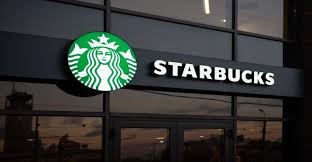“Starbucks Franchise” Everything You Need to Know
Imagine enjoying your favorite cup of coffee at a cozy café, where every detail—from the aroma of freshly roasted beans to the warm smile of the barista—creates an inviting experience. Now, imagine being part of that experience by owning a piece of that global phenomenon. Did you know that Starbucks, one of the world’s most recognized brands, operates in over 80 countries and serves millions of customers every day? While many dream of launching their own coffee shop, understanding the ins and outs of a Starbucks franchise can be a game changer for aspiring entrepreneurs.
In this comprehensive guide, we’ll explore everything you need to know about the Starbucks franchise. We’ll cover:
- Definition and Key Characteristics: A clear explanation of what a Starbucks franchise is and the unique features that define it.
- Historical and Contextual Background: The evolution of Starbucks as a brand, notable milestones, and how the franchise model has developed over time.
- In-Depth Exploration: A detailed look at the process of acquiring a Starbucks franchise, the services and support provided, and real-world examples illustrating success stories and challenges.
- Importance, Applications, and Benefits: Why a Starbucks franchise matters in the world of business, its impact on local communities, and how it enhances brand credibility and growth.
- Common Misconceptions and FAQs: Debunking myths and providing clear answers to frequently asked questions.
- Modern Relevance and Current Trends: How recent technological advances, changing consumer habits, and market dynamics are shaping the future of the Starbucks franchise.
- Conclusion and Call-to-Action: A summary of key points and actionable steps to help you decide if a Starbucks franchise is the right venture for you.
By the end of this guide, you’ll have a thorough understanding of what it means to own and operate a Starbucks franchise, empowering you to make informed decisions and potentially join one of the world’s most iconic brands.
Introduction
Imagine waking up each morning with the possibility of owning a business that not only serves premium coffee but also embodies a globally recognized brand known for quality, innovation, and community engagement. The allure of a Starbucks franchise is undeniable—it promises not just financial rewards but the opportunity to be part of a dynamic and customer-focused business culture.
Yet, like any major business venture, launching a Starbucks franchise requires careful planning, a clear understanding of the process, and the readiness to embrace a unique business model. In this guide, we’ll delve into the world of Starbucks franchises: what they are, how they operate, and why they remain a sought-after option for entrepreneurs worldwide. Whether you’re contemplating a career change, planning to expand your portfolio, or simply fascinated by the concept of franchising a global brand, this article will provide you with valuable insights to help you navigate your entrepreneurial journey.
What Is a Starbucks Franchise?
Definition and Essential Characteristics
A Starbucks franchise refers to the licensing arrangement through which individuals or companies operate Starbucks-branded outlets under the established guidelines and standards of the Starbucks Corporation. Unlike typical franchises, Starbucks has a unique approach to expansion; the company itself owns and operates the majority of its locations. However, in some international markets, Starbucks does use licensed partnerships that operate similarly to franchises. These licensed outlets adhere to Starbucks’ rigorous quality, service, and branding standards while allowing local entrepreneurs to bring the Starbucks experience to their communities.
Key Characteristics of a Starbucks Franchise:
- Brand Recognition:
Leverage one of the world’s most recognized and trusted coffee brands. - Strict Operational Guidelines:
Adherence to comprehensive guidelines covering product quality, store design, customer service, and marketing. - Quality and Consistency:
Commitment to delivering a consistent customer experience across all locations. - Support and Training:
Extensive training programs and ongoing support provided by the Starbucks Corporation or licensed partner. - Market Adaptation:
While maintaining core brand elements, licensed outlets may adapt certain aspects to fit local tastes and cultural nuances. - High Initial Investment:
Operating under the Starbucks brand requires a significant initial investment, reflecting the premium positioning of the brand.
In essence, a Starbucks franchise (or licensed outlet) is a business that operates under the Starbucks brand umbrella, benefiting from its established reputation and support system while meeting strict operational standards to ensure consistency and quality.
Historical and Contextual Background
The Evolution of the Starbucks Franchise Model
The journey of Starbucks from a small coffee retailer in Seattle to a global coffee empire is a story of innovation, branding, and strategic expansion. While Starbucks primarily operates company-owned stores, its franchising and licensing models—especially in international markets—have been crucial in its global expansion strategy.
Early History and Growth
- Founding Story:
Starbucks was founded in 1971 in Seattle, initially as a single store selling high-quality coffee beans. The company’s commitment to premium quality and customer experience set it apart in its early days. - Transformation and Expansion:
Under Howard Schultz’s leadership in the 1980s, Starbucks transformed into a coffeehouse chain, emphasizing not just coffee but also the experience of a “third place” between home and work. - Rapid Growth:
The 1990s and early 2000s saw rapid expansion both domestically and internationally, with Starbucks becoming synonymous with specialty coffee culture around the world.
The Role of Licensing and Franchising
- Global Expansion Strategy:
While Starbucks owns most of its U.S. stores, the company uses licensing agreements and franchising models in international markets to navigate local regulations, cultural nuances, and market conditions. - Adapting to Local Markets:
In regions such as Asia and Europe, licensed Starbucks outlets may offer products tailored to local tastes while maintaining the core brand identity. This balance of consistency and local adaptation has been key to Starbucks’ global success. - Industry Milestones:
Key milestones include the opening of the first licensed store in Japan in 1996, which paved the way for a rapid international expansion that now spans over 80 countries.
Notable Historical Anecdotes
- Iconic Store Designs:
Starbucks’ emphasis on store design has turned many of its outlets into local landmarks, blending global branding with regional architectural influences. - Innovative Business Practices:
Starbucks has pioneered the concept of a “third place,” a comfortable environment where customers can relax and connect, a practice that has significantly influenced the design and operation of licensed outlets worldwide.
This historical context demonstrates that the Starbucks franchise model is not just about selling coffee—it’s about creating a consistent, high-quality experience that resonates with customers globally while adapting to local cultures.
In-Depth Exploration of the Starbucks Franchise
1. The Licensing and Franchise Model
How the Model Works
- Licensing Agreements:
In many international markets, Starbucks uses licensing agreements to allow local partners to operate stores under the Starbucks brand. These partners are responsible for daily operations while adhering to Starbucks’ stringent guidelines. - Franchise-Like Operations:
Although not traditional franchises, licensed stores operate similarly, with local operators receiving support in areas such as training, marketing, and product sourcing. - Revenue Sharing and Fees:
Licensed partners typically pay fees or a percentage of their revenue to the parent company in exchange for using the brand and accessing corporate support.
Support and Training Provided
- Comprehensive Training Programs:
Starbucks offers extensive training for licensed partners, covering everything from barista skills and customer service to management and marketing. - Operational Support:
Ongoing assistance is provided through dedicated support teams that help with supply chain management, product updates, and store design. - Brand Guidelines:
Licensed partners receive detailed brand guidelines to ensure consistency in service, product quality, and store ambiance.
Real-World Example:
A licensed Starbucks outlet in South Korea benefits from localized product offerings (like unique seasonal beverages) while adhering to global standards. The operator receives continuous support from Starbucks’ regional teams, ensuring that both the brand’s integrity and local market needs are met.
2. Financial Considerations and Investment
Initial Investment Requirements
- Capital Outlay:
Operating a Starbucks franchise (or licensed outlet) requires a significant initial investment, covering costs such as store setup, equipment, inventory, and licensing fees. - Ongoing Operational Costs:
Additional expenses include rent, staff wages, maintenance, and marketing. These costs must be carefully managed to ensure profitability. - Financing Options:
Many potential licensees explore financing through bank loans, investors, or even internal funding mechanisms offered by the parent company.
Return on Investment (ROI)
- Revenue Streams:
With a strong brand and established customer base, licensed Starbucks outlets have the potential to generate substantial revenue, often providing a steady stream of income. - Market Performance:
The success of a Starbucks outlet depends on factors such as location, local market dynamics, and effective management. High-traffic areas typically yield higher returns. - Case Study:
A licensed Starbucks in a bustling urban center in China achieved rapid ROI due to high foot traffic and strong brand loyalty, demonstrating how market conditions can significantly influence financial performance.
3. Operational Strategies and Best Practices
Location and Market Analysis
- Strategic Placement:
The success of a Starbucks outlet is heavily dependent on location. High-traffic areas such as shopping malls, business districts, and transportation hubs are ideal. - Demographic Research:
Understanding the local market demographics is essential. Licensed partners must tailor certain product offerings to meet the tastes and preferences of local customers. - Competitor Analysis:
Evaluating the competition helps identify unique selling points and areas where the outlet can differentiate itself.
Marketing and Branding
- Maintaining Consistency:
Adhering to Starbucks’ global brand guidelines is crucial to ensure that the customer experience remains consistent, regardless of location. - Localized Marketing:
While the brand remains consistent, licensed outlets often engage in localized marketing efforts to resonate with the local community. - Digital and Social Media Engagement:
Leveraging digital platforms to promote the store, share customer experiences, and announce new products can enhance brand visibility and drive customer traffic.
Customer Experience and Service
- Quality Control:
Consistent quality in products and customer service is key. Regular training and adherence to operational standards ensure that the customer experience is top-notch. - Feedback Mechanisms:
Implementing systems to gather customer feedback allows licensed partners to continuously improve and adapt to consumer needs. - Community Engagement:
Engaging with the local community through events, partnerships, and social initiatives can strengthen customer loyalty and enhance the outlet’s reputation.
Real-World Example:
A licensed Starbucks in London uses a mix of global branding and local flavor—offering region-specific beverages and hosting community events. This blend of consistency and localization drives high customer satisfaction and loyalty, ensuring a steady revenue stream.
Importance, Applications, and Benefits of the Starbucks Franchise Model
1. Economic Impact and Brand Power
Driving Global Commerce
- Economic Contribution:
Starbucks outlets, including licensed ones, contribute significantly to local economies by creating jobs, attracting tourism, and supporting local suppliers. - Global Reach:
The Starbucks brand is recognized worldwide, making it easier for licensed partners to attract customers and compete in diverse markets. - Brand Loyalty:
The strong, established brand of Starbucks builds instant trust and credibility, which can drive higher customer traffic and repeat business.
Enhancing Business Opportunities
- Investment Attraction:
Being part of the Starbucks ecosystem can attract further investments, partnerships, and opportunities for growth. - Market Expansion:
Licensed outlets offer a scalable model that can be replicated in multiple locations, leading to rapid market expansion and increased revenue potential. - Cross-Promotion:
The global presence of Starbucks allows for cross-promotional opportunities and collaborative marketing efforts that can enhance brand visibility.
Example:
A licensed Starbucks outlet in a popular tourist destination not only benefits from regular local customers but also attracts international visitors who are loyal to the brand, contributing to robust sales and economic growth in the area.
2. Strategic Advantages for Licensed Partners
Support and Infrastructure
- Comprehensive Support:
Starbucks provides licensed partners with extensive training, marketing resources, operational guidelines, and continuous support, ensuring that even new operators can succeed. - Efficiency and Consistency:
The established systems and processes reduce the risk of operational errors and maintain a consistent quality of service across all outlets. - Risk Mitigation:
Operating under a globally recognized brand reduces market risks and provides a level of stability that independent businesses may lack.
Flexibility and Adaptability
- Localized Adaptation:
Licensed partners have the flexibility to tailor certain aspects of their offerings to better suit local tastes while still adhering to global standards. - Operational Autonomy:
Although they must follow strict guidelines, partners have some autonomy in managing day-to-day operations, allowing for innovative approaches that resonate with local customers. - Scalability:
The franchise model is inherently scalable, providing opportunities to expand to new locations as the business grows.
Real-World Example:
A licensed Starbucks operator in South Korea adapted the standard menu to include local flavors and seasonal beverages, enhancing customer satisfaction and boosting sales, all while maintaining the core Starbucks experience.
3. Cultural and Social Impact
Community Engagement
- Local Hubs:
Starbucks outlets often serve as community hubs where people gather, socialize, and work. Licensed stores that actively engage with their local communities contribute to a sense of belonging and cultural identity. - Corporate Social Responsibility (CSR):
Starbucks is known for its commitment to ethical sourcing, sustainability, and community initiatives. Licensed partners often adopt these values, further enhancing their social impact. - Cultural Adaptation:
Licensed outlets can integrate local cultural elements into their store design and product offerings, creating a unique blend of global brand consistency and local flavor.
Impact on Consumer Behavior
- Customer Experience:
The personal and inviting experience offered by Starbucks can significantly influence consumer behavior, promoting loyalty and long-term engagement. - Innovation in Retail:
Starbucks has consistently set benchmarks in customer service, store design, and product innovation, influencing trends in the retail and hospitality industries.
Real-World Example:
A Starbucks outlet in a culturally rich neighborhood uses local artwork and community events to create a distinctive atmosphere that resonates with residents, driving customer loyalty and enhancing the cultural vibrancy of the area.
Addressing Common Misconceptions and FAQs
Common Misconceptions
Misconception: Starbucks franchises are available to everyone.
Clarification:
In the U.S., Starbucks primarily operates company-owned stores; however, in many international markets, Starbucks uses a licensing model that functions similarly to a franchise. This model has specific eligibility criteria and significant investment requirements.Misconception: Operating a Starbucks franchise guarantees immediate success.
Clarification:
While the brand’s strong reputation provides a solid foundation, success depends on factors like location, management, local market conditions, and adherence to operational standards.Misconception: Licensed Starbucks stores are completely independent from the corporate brand.
Clarification:
Licensed outlets must adhere to strict guidelines set by Starbucks, ensuring a consistent customer experience and brand integrity across all locations.
Frequently Asked Questions (FAQs)
Q1: What is a Starbucks franchise?
A: A Starbucks franchise generally refers to a licensing agreement through which local operators manage and run Starbucks-branded stores in certain international markets, following strict corporate guidelines.
Q2: How do I become a licensed Starbucks operator?
A: The process typically involves meeting strict financial, operational, and experience criteria set by Starbucks. Prospective operators must demonstrate the ability to manage a high-quality, customer-focused business.
Q3: What are the financial requirements for obtaining a Starbucks license?
A: Financial requirements can be significant and vary by market. They often include a substantial initial investment for store setup, ongoing fees, and a demonstrated capacity to maintain operational excellence.
Q4: What support does Starbucks provide to licensed operators?
A: Starbucks offers comprehensive training, marketing support, operational guidelines, and ongoing assistance to ensure that licensed outlets meet the brand’s high standards.
Q5: Can a Starbucks franchise operate in any location?
A: No, location is critical. Licensed operators must secure strategic, high-traffic locations that align with Starbucks’ brand and target market to maximize customer engagement and profitability.
Modern Relevance and Current Trends
The Future of the Starbucks Franchise Model
As global markets evolve and consumer preferences shift, the model of operating Starbucks outlets—whether company-owned or licensed—continues to adapt. Here are some current trends shaping the future:
Digital and Technological Advancements
- Mobile and Contactless Payments:
The increasing adoption of mobile payment systems and contactless technologies enhances the customer experience and streamlines transactions. - Data Analytics:
Starbucks leverages advanced analytics to understand customer behavior, optimize product offerings, and tailor marketing strategies. Licensed operators benefit from these insights to drive local performance. - Integration of IoT:
Internet of Things (IoT) technologies are being used to monitor store performance, manage inventory, and ensure maintenance, making operations more efficient and responsive.
Evolving Consumer Trends
- Focus on Experience:
Consumers today are drawn to experiences rather than just products. Starbucks continues to innovate in store design, ambiance, and service to create a “third place” where customers can relax and connect. - Sustainability and Ethical Practices:
There is growing consumer interest in sustainable and ethically sourced products. Starbucks’ commitment to corporate social responsibility influences its licensed outlets to adopt similar practices, from recycling initiatives to ethical sourcing of coffee beans. - Cultural Adaptation:
Licensed stores often tailor their offerings to reflect local tastes and cultural nuances, making each outlet unique while maintaining core brand elements.
Global Expansion and Market Adaptation
- International Licensing:
As Starbucks continues to expand globally, its licensing model has allowed it to adapt to local market conditions while maintaining global brand standards. - Localized Innovations:
In markets like Asia, licensed outlets have introduced innovative products and services that cater specifically to local consumers, setting trends that often influence global practices. - Community Engagement:
Increasing emphasis on local community involvement helps licensed outlets build strong customer relationships and contribute to regional economic growth.
Real-World Example:
A licensed Starbucks outlet in Singapore integrates local flavors into its menu and uses digital technology to enhance customer interactions. The store’s success is driven by a blend of global brand consistency and local innovation, demonstrating the effective adaptation of the Starbucks franchise model to diverse markets.
Conclusion
Recap of Key Points
In this comprehensive guide on the Starbucks franchise model, we have:
- Defined the Concept:
Explained that a Starbucks franchise (or licensed outlet) is a business operated under the Starbucks brand, following strict corporate guidelines and benefiting from extensive support and global recognition. - Explored Its Historical Evolution:
Traced the growth of Starbucks from a small coffee retailer in Seattle to a global brand that leverages licensing to expand internationally. - Examined Core Components:
Detailed the services, operational strategies, financial requirements, and support structures that underpin the Starbucks franchise model. - Highlighted Benefits and Applications:
Discussed how the model drives economic growth, enhances brand credibility, and offers strategic advantages in competitive markets. - Addressed Misconceptions and FAQs:
Clarified common myths and provided clear answers to frequently asked questions about becoming a licensed Starbucks operator. - Reviewed Modern Trends:
Explored the impact of digital transformation, changing consumer behaviors, and global market dynamics on the evolution of Starbucks franchises.
Why Understanding a Starbucks Franchise Matters
For entrepreneurs and investors looking to tap into the lucrative and highly respected coffee industry, understanding the Starbucks franchise model is crucial. It not only offers a pathway to success through a globally recognized brand but also provides comprehensive support, robust operational strategies, and a framework for sustainable growth. Whether you’re considering a career in franchise ownership or seeking to expand your business portfolio, the insights provided in this guide can help you make informed decisions and unlock new opportunities.
Call-to-Action
Are you ready to join one of the world’s most iconic brands and bring the Starbucks experience to your community? Explore the opportunities available through the Starbucks franchise model, evaluate the financial and operational requirements, and consider how this business model aligns with your goals. Share this post with fellow entrepreneurs, franchise enthusiasts, and business professionals. Leave your thoughts, questions, or experiences in the comments below, and join the conversation about the future of Starbucks franchises in today’s global marketplace. Your journey to franchise success begins with a single step—embrace the opportunity and take that step today!
Additional Resources and Further Reading
For those interested in learning more about the Starbucks franchise model and exploring the opportunities it offers, consider these reputable resources:
- Starbucks Official Website:
Starbucks Corporation – Official information on company history, brand values, and global operations. - International Franchise Association (IFA):
IFA – Resources and guidelines on franchising, including case studies and industry insights. - Entrepreneur Magazine:
Entrepreneur Articles on Franchising – Articles, tips, and success stories from franchise owners. - Investopedia – Franchise:
Investopedia Franchise Guide – Detailed explanations of franchise models, financial requirements, and market trends. - Books:
Consider reading “The Franchise MBA” by Nick Neonakis or “Franchising For Dummies” by Michael Seid and Joyce Mazero for practical insights into franchise ownership. - Online Courses:
Platforms like Coursera, Udemy, and LinkedIn Learning offer courses on franchising, business management, and entrepreneurship that can help you dive deeper into the subject. - Industry Reports:
Research reports from McKinsey, PwC, and IBISWorld provide valuable insights into the trends and future outlook of the franchise industry.
Final Thoughts
The Starbucks franchise model represents one of the most successful and widely recognized pathways to business ownership. It offers a unique blend of global brand strength, comprehensive support, and a proven operational framework that can pave the way for long-term success in the competitive coffee industry. By understanding the ins and outs of the Starbucks franchise, you can make informed decisions, mitigate risks, and tap into the immense potential of this iconic brand.
Thank you for joining us on this in-depth exploration of the Starbucks franchise model. We hope this guide has provided you with actionable insights, practical strategies, and the inspiration needed to pursue your franchise dreams. Bookmark this post for future reference, share it with fellow entrepreneurs and franchise enthusiasts, and leave your comments or questions below. Your journey to owning a piece of the Starbucks legacy starts here—embrace the opportunity and unlock your franchise potential today!




 4.1 Attribution Theory and Person Perception: Why We Judge People the Way We Do (Even When We’re Totally Wrong) Let’s be honest. We’ve all
4.1 Attribution Theory and Person Perception: Why We Judge People the Way We Do (Even When We’re Totally Wrong) Let’s be honest. We’ve all


